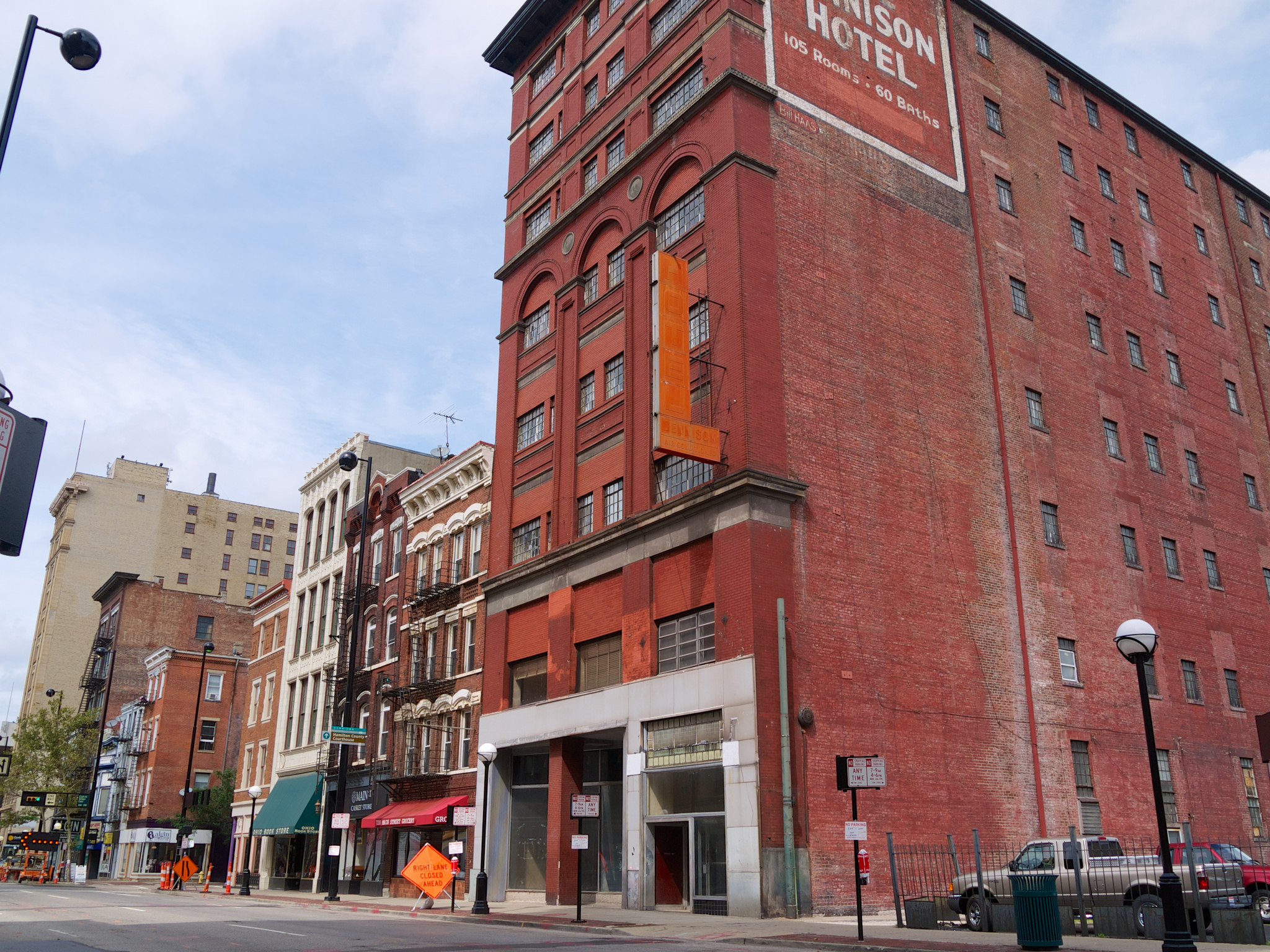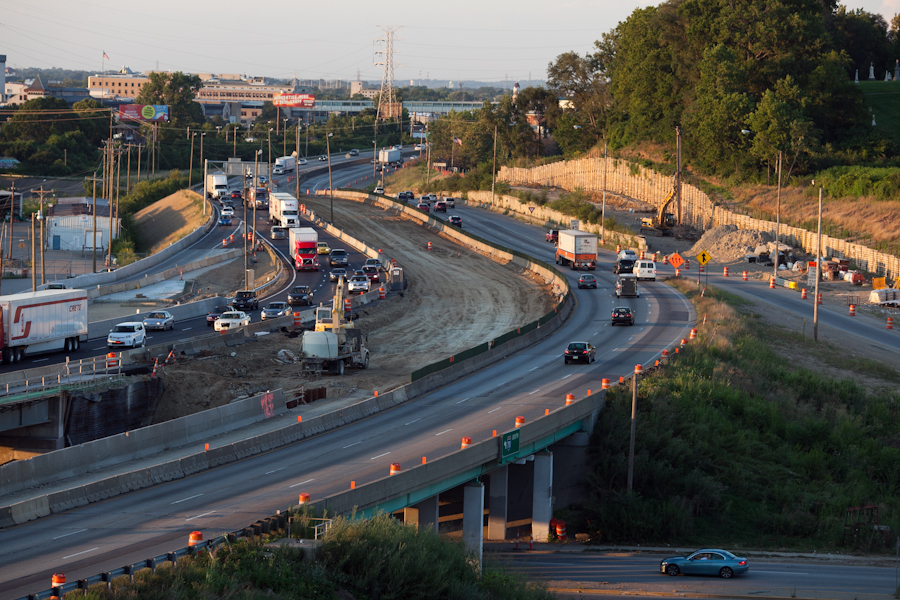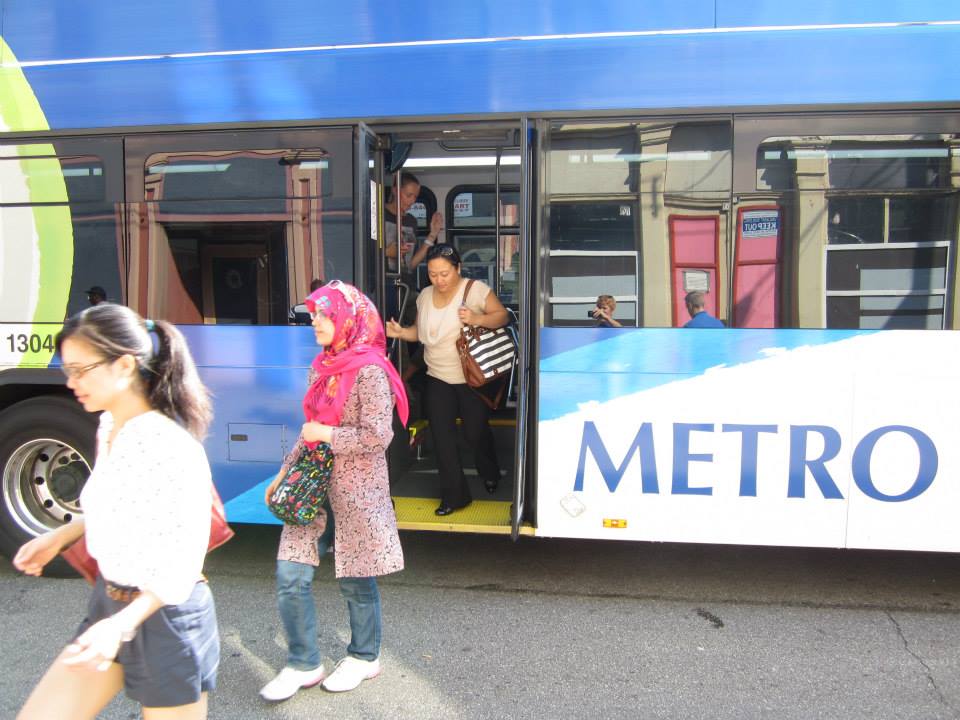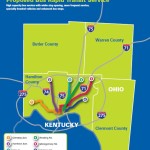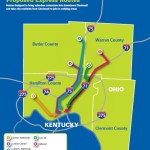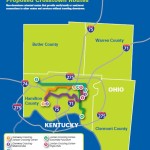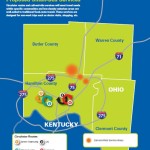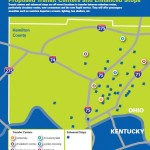Information obtained by UrbanCincy through a public records request shows that Columbia REI, LLC has enlisted the legal assistance of Francis Barrett and Timothy Burke to get Historic Conservation Board approval for the demolition of the historic Dennison Hotel.
Built in 1890, the Dennison Hotel is located within the Main Street Historic District and has sat vacant for several years. In the past, the eight-story brick structure had served as a single-occupancy room hotel in what was at that time a seedy part of the central business district.
Over the past several months historic preservationists have been organizing themselves in an effort to track the status of this historic structure as rumors have swirled that the owners were interested in demolition.
The timing becomes all the more urgent with, according to documents filed with City Hall, the owners losing hundreds of thousands of dollars on the property each year, and with the Cincinnati Streetcar, which runs right in front of the property, poised to begin operation in the coming months.
In its application to City Hall, Columbia REI, LLC, which purchased the land from Columbia Oldsmobile Company in January, says that the real estate transaction is part of a larger effort to assemble and “protect” adjoining real estate that is being prepared for a “major redevelopment” that would be in line with the numerous other large-scale development projects taking place nearby.
As part of the demolition request, the owners were required to provide renovation cost estimates, along with the potential economic feasibility of legally permissible or likely uses. The report, completed by Beck Consulting in late February, provides evidence as to why a residential, office or hotel conversion would be challenging, but does not account or consider the possibility of any historic tax credits from the State of Ohio, or other incentives from the City of Cincinnati.
According to Beck Consulting’s report, supplemented by renovation cost estimates from HGC Construction, it would cost approximately $10.5 million to renovate the historic structure into a 60-room hotel with a street-level lobby and restaurant space, $7.9 million to turn it into a 52-unit apartment building, $8.7 million for a 35-unit condominium building, or $5 million to turn it into a 39,000-square-foot office building.
Over recent years, the State of Ohio has awarded tens of millions of dollars in tax credits to historic preservation projects such as this. Given the large-scale and potential economic impact of renovating the Dennison Hotel, it would seem likely that it would be well-positioned for such financial benefits.
According to the meeting schedule for Cincinnati’s Historic Conservation Board, the application should come up for a hearing on Monday, April 18. All meetings take place at 3pm in the Public Hearing Room on the fifth floor of Two Centennial Plaza at 805 Central Avenue.
EDITORIAL NOTE: An earlier version of this story incorrectly stated that the Historic Conservation Board would hear this item at their April 4 meeting. Due to the application being submitted on February 23, this item will actually be on the Historic Conservation Board’s April 18 meeting agenda.
